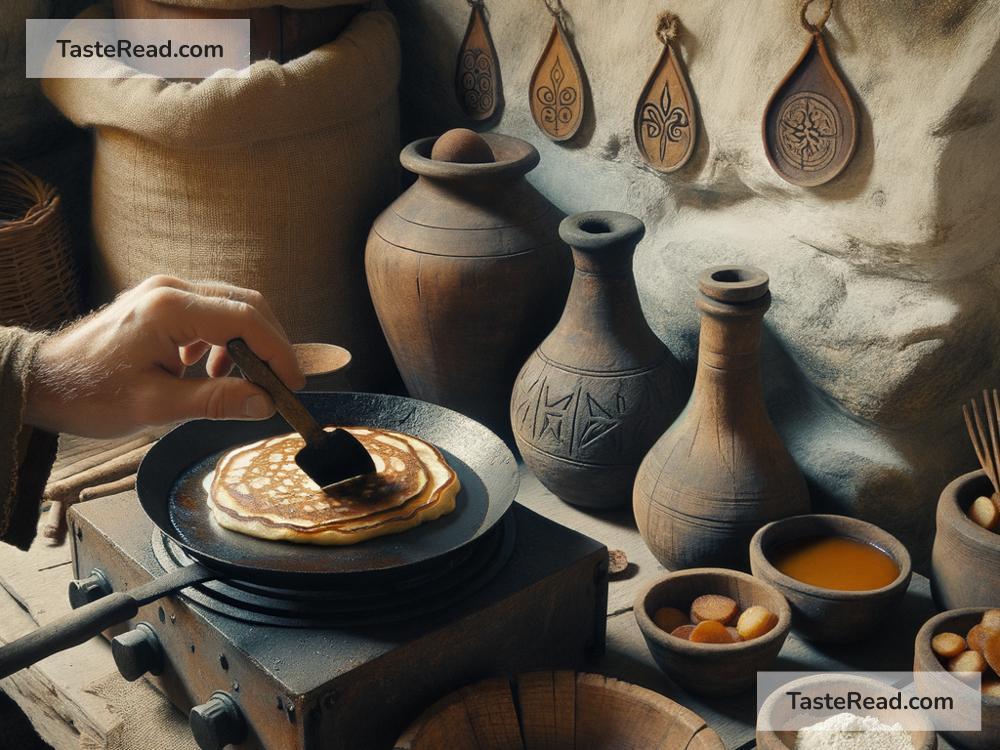Origins of the First Pancake in Folklore
Pancakes are one of the world’s most beloved foods. From fluffy stacks loaded with syrup to thin crepes filled with fruits or chocolate, pancakes have captured hearts and stomachs across cultures. But have you ever wondered where pancakes came from and why they became so popular? Interestingly, the story of the first pancake is tied to folklore, religion, and even a few superstitions. Let’s take a fun look at the origins of the pancake and its significance in history.
Pancakes in Ancient History
Pancakes are not just modern creations. People have been eating variations of pancakes for thousands of years! Archaeologists have discovered evidence suggesting that ancient civilizations made early versions of pancakes. These weren’t exactly like the fluffy pancakes we know today, but flat, round cakes made from crushed grains and water.
One of the earliest records of pancakes can be traced back to Ancient Greece. In Greek culture, a pancake-like dish called “tiganites” was popular around 600 BCE. Tiganites were made with wheat flour, olive oil, honey, and curdled milk. Similarly, in ancient Rome, people enjoyed a flat cake called “alia dulcia,” which means “other sweets.” These cakes were flavored with ingredients like eggs, milk, and sometimes spiced with herbs or nuts.
Since these flat cakes were easy to make over an open flame or hot stone, it’s no wonder that pancakes became a part of so many early societies.
Pancakes in Folklore
As pancakes became part of various cultures, they began to appear in legends and folklore. Some stories explain why people made pancakes, while others use them as metaphors for generosity or greed.
One famous folk tale connected to pancakes comes from Scandinavia. It’s called “The Runaway Pancake,” a story similar to “The Gingerbread Man.” In this tale, a pancake decides it doesn’t want to be eaten, so it jumps out of the frying pan and rolls away. As it travels, it meets several hungry animals, including a pig, a chicken, and a cow, who all try to eat it. The pancake outsmarts everyone—until it meets a sly fox, who tricks it and eats it in the end.
This tale is often used to teach children about cleverness and caution. The idea of a runaway pancake also reflects how food was considered precious in older times. A pancake that could escape was not just funny but a reminder of the importance of not wasting food.
Religious Connections: Pancakes and Lent
One of the most famous links between pancakes and history is tied to the Christian tradition of Lent. Lent is a period of fasting and reflection that lasts for 40 days before Easter. During this time, people avoid rich foods such as meat, eggs, and dairy products. Before Lent begins, there is a big celebration called Shrove Tuesday (sometimes known as Pancake Tuesday or Fat Tuesday).
Shrove Tuesday was a day when people prepared for fasting by using up all their rich ingredients. What better way to use milk, eggs, and butter than to make pancakes? Pancakes became a symbol of feasting and indulgence before the solemn season of Lent. This tradition is still widely celebrated today in places like the United Kingdom and parts of Europe.
In some cultures, pancakes became part of rituals and superstitions. For example, in medieval Europe, flipping pancakes was believed to bring good luck. People thought that if you could flip a pancake without dropping it or breaking it, you would have a year of prosperity. Some households even made special charms with pancakes, hiding small items like coins inside them. Whoever found the coin in their pancake was thought to have good fortune!
Pancakes Around the World
While the concept of the pancake originated long ago, every culture puts its own spin on it. For example:
– In China, spring onion pancakes are savory and crisp, made with layers of dough and green onions.
– In Ethiopia, injera is a fermented flatbread made from teff flour, often served with stews and vegetables.
– In France, thin crepes are filled with anything from Nutella to cheese and ham.
– In Russia, blinis are small pancakes often topped with sour cream or caviar during celebrations.
These diverse versions show that the pancake has evolved differently in different parts of the world, but it remains a universally loved dish.
The Symbolism of Pancakes
Pancakes are more than just food; they’ve come to represent celebration, family, and traditions. In folklore, they often carry lessons. Sometimes, they are symbols of generosity, as villagers might come together to share pancakes during feasts. Other times, they represent thriftiness, as people learned to make delicious food using simple ingredients.
Even today, pancakes hold a special place in our lives. Whether you’re at a big breakfast buffet or enjoying them during a holiday, pancakes bring comfort and joy.
Conclusion
The origins of the first pancake are deeply tied to human history, religion, and folklore. Starting as simple flat cakes made from grain, pancakes became an important part of ancient diets and later evolved into cultural and religious traditions. Folktales like “The Runaway Pancake” gave pancakes personality, while customs such as Shrove Tuesday emphasized their role in celebrating abundance before fasting.
Today, pancakes are a global favorite, enjoyed in countless unique ways across different cultures. Whether you prefer them sweet or savory, thick or thin, pancakes connect us to a shared history of food and storytelling. So, the next time you sit down to enjoy a delicious pancake, remember—it’s not just a treat; it’s a piece of history!


